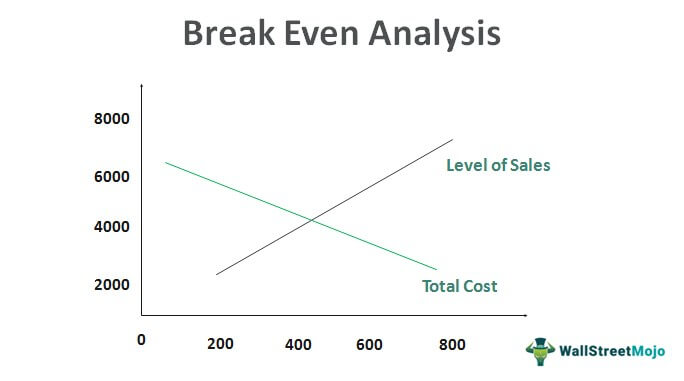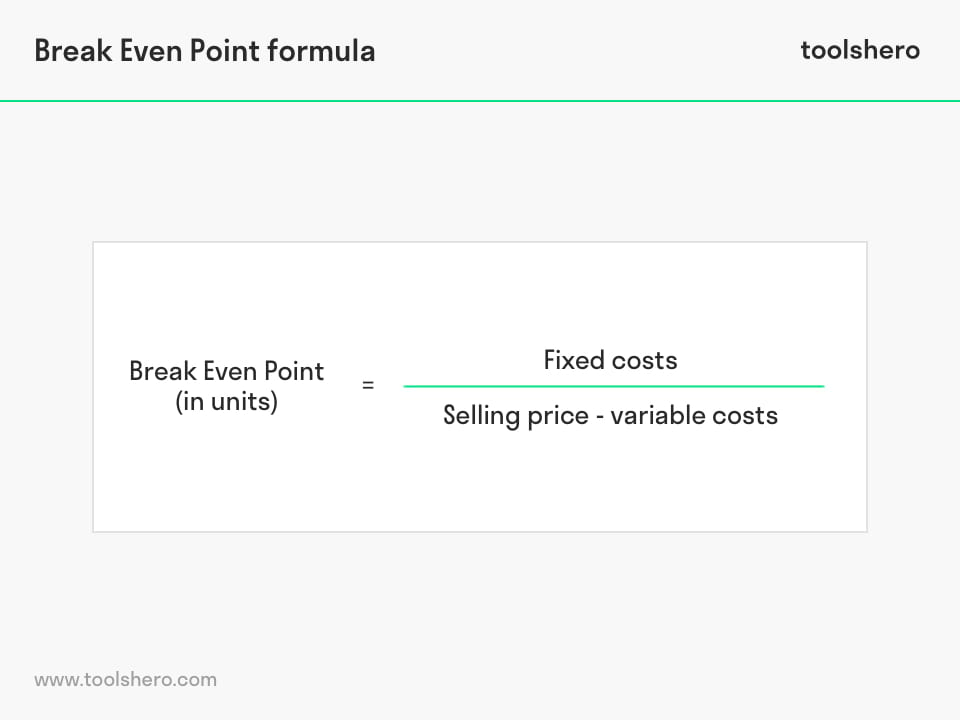
This makes it hard to factor in taxes using our simple formula above. To calculate the Break-Even Point (Quantity) for which we have to divide the total fixed cost by the contribution per unit. Barbara is the managerial how to develop an aggregate plan for your operations management accountant in charge of a large furniture factory’s production lines and supply chains. This will give us the total dollar amount in sales that will we need to achieve in order to have zero loss and zero profit.

Create a Free Account and Ask Any Financial Question
After almost a decade of experience in public accounting, he created MyAccountingCourse.com to help people learn accounting & finance, pass the CPA exam, and start their career. Let us go through a break-even analysis step by step to illustrate its usefulness with a real-life example of starting a business. The break-even point is an extremely important starting goal to work towards. No matter whether you are a business owner, accountant, entrepreneur or even a marketing specialist – you will often come across this metric, which is why our online calculator is so handy. If you’re a latecomer to a market, there might be too much supply, and you might not be able to break even without economies of scale. However, if you jump on a trend early, you might be able to command market share and price to accelerate toward your break-even point.
Break-Even Price: Definition, Examples, and How To Calculate It
Just because the break-even analysis determines the number of products you need to sell, there’s no guarantee that they will sell. The break-even point allows a company to know when it, or one of its products, will start to be profitable. If a business’s revenue is below the break-even point, then the company is operating at a loss. It’s also important to keep in mind that all of these models reflect non-cash expense like depreciation. A more advanced break-even analysis calculator would subtract out non-cash expenses from the fixed costs to compute the break-even point cash flow level.
Break Even Calculator
In this situation, it’s best to use forecasting tools like financial projections or budgeting software to account for future expenses and revenue growth. To calculate the Break Even Sales ($) for which we will divide the total fixed cost by the contribution margin ratio. It means by selling up to 3000 units, XYZ Ltd will be in no loss and no profit situation and will overcome its fixed cost only. Selling quantity beyond 3000 will help in earning a profit, which will be equal to the contribution per unit for every additional unit sold beyond 3000. Break-even analysis is very important for any organization so that it can know its overall ability to generate profit. Therefore, it is the responsibility of the management that it should monitor the organization breakeven point constantly as it helps in cost-saving and resulting in a decrease of the breakeven point.
- “When will we actually make money?” is the burning question for new businesses.
- Whether you are a small startup or an established business, calculating your break-even point helps ensure your business stays profitable and financially sound.
- For example, semi-variable costs, which have both fixed and variable components, can complicate the accuracy of the breakeven calculation which then changes the breakeven point in units.
- Break-even is the point at which revenue and total costs are the same, meaning the business is making neither a profit nor a loss.
This simple analysis can help that decision-making process by determining how much product you’ll need to sell to be profitable and how long that product will last. You can adjust variables, fixed costs, sales price, and volume metrics in each analysis to determine how much to budget for each of those costs. Break-even analysis in business plan plays a very crucial role in decision making process of the management related to pricing, production level, sales level, marketing strategies, budgeting, etc. It is a guide for calculating the margin of safety of the production process, based on revebue and cost. Note that the total fixed costs aren’t per product but rather the sum total of your business expenses over any given time period, whether that’s a month, quarter, or year (you choose!).
Break-Even Units Sold
The total variable costs will therefore be equal to the variable cost per unit of $10.00 multiplied by the number of units sold. Having high fixed costs puts a lot of pressure on a business to make up those expenses with sales revenue. If you find yourself falling short of your break-even point month over month and feel like you can’t change your prices, lowering your fixed costs can be a solution. While the breakeven point is a valuable tool for decision-making, it has several limitations. One major downside is its reliance on the assumption that costs can be neatly divided into fixed and variable categories.
If they cut the price by too much and the sales forecasts for an increase in demand are inaccurate, they may cover their variable costs but not cover their fixed costs. If they don’t cut their price at all or the price per unit isn’t competitive with the market, they may see less demand for their product and not be able to cover their total fixed costs. Break-even analysis helps determine at what point profit kicks in by considering all costs and revenue from sales. With break-even analysis, company owners can compare different pricing strategies and calculate how many units sold will lead to profitability. If they cut the price substantially, they’ll need a large jump in demand for their product to pay for their fixed costs, which are needed to keep the business operating. This margin indicates how much of each unit’s sales revenue contributes to covering fixed costs and generating profit once fixed costs are met.
A gross break-even point is often not entirely correct for figuring out exactly where you would break even on a trade, investment, or project. This is because taxes, fees, and other charges are often involved that must be taken into account. For instance, if you sell a stock for a $10 profit subject to long-term capital gains tax, you will have to pay $1.50 in taxes.
When analyzing your break-even point, not only do you want to see that your business is breaking even, you’re looking to make sure your business is profitable as well. Here are a few ways to lower your break-even point and increase your profit margin. Once you’ve decided whether you want to find your break-even point in sales dollars or units, you can then begin your analysis. Here are four ways businesses can benefit from break-even analysis.
The breakeven formula for a business provides a dollar figure that is needed to break even. This can be converted into units by calculating the contribution margin (unit sale price less variable costs). Dividing the fixed costs by the contribution margin will reveal how many units are needed to break even. Break-even analysis, or the comparison of sales to fixed costs, is a tool used by businesses and stock and option traders. It is essential in determining the minimum sales volume required to cover total costs and break even. The Break Even Revenue Calculator is a useful tool for businesses to determine the amount of revenue they need to generate in order to cover their operating expenses.

